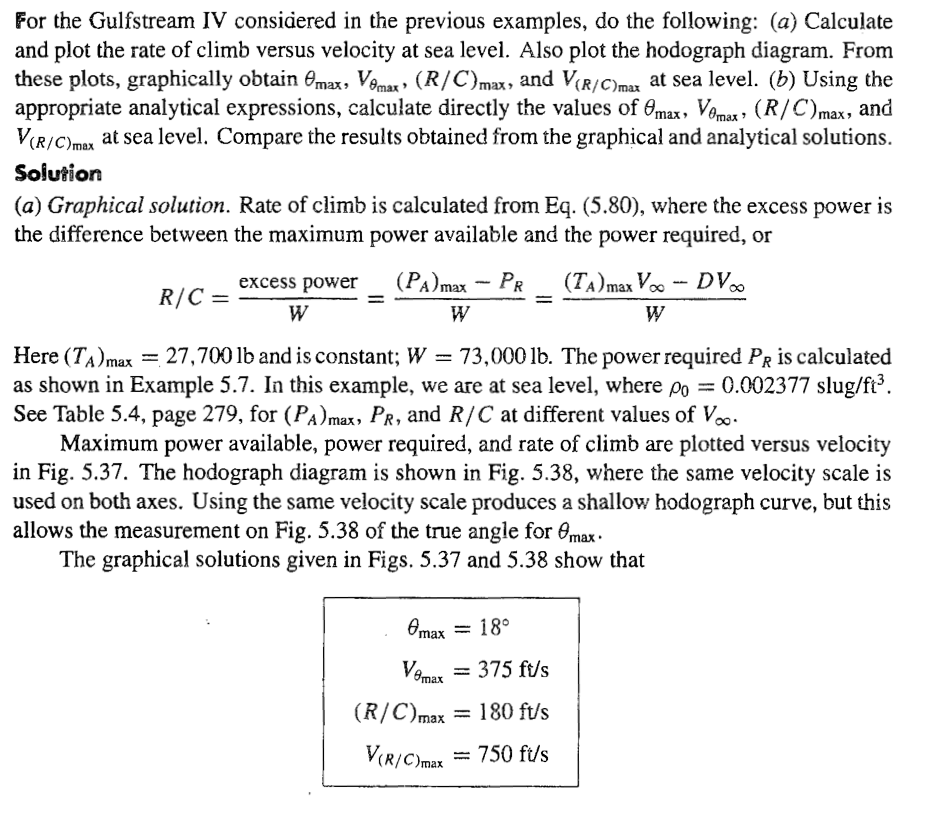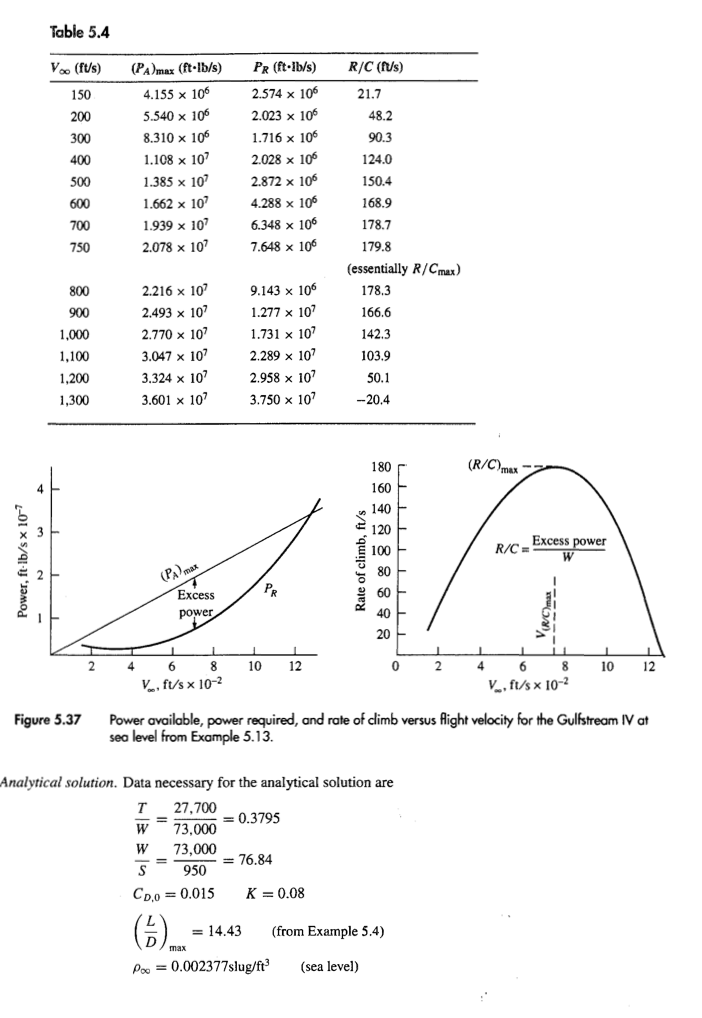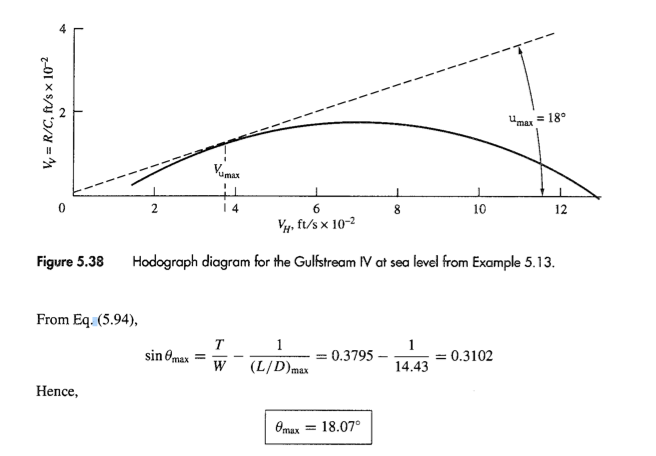Answered step by step
Verified Expert Solution
Question
1 Approved Answer
Explain and show me the step by step of how the values from the Hodograph have been obtained? For the Gulfstream IV considered in the
Explain and show me the step by step of how the values from the Hodograph have been obtained?



For the Gulfstream IV considered in the previous examples, do the following: (a) Calculate and plot the rate of climb versus velocity at sea level. Also plot the hodograph diagram. From these plots, graphically obtain max, Vmax (R/C) max, and V(R/C) max at sea level. (b) Using the appropriate analytical expressions, calculate directly the values of Omax, Vmax (R/C) max, and V(R/C) max at sea level. Compare the results obtained from the graphical and analytical solutions. Solution (a) Graphical solution. Rate of climb is calculated from Eq. (5.80), where the excess power is the difference between the maximum power available and the power required, or R/C = excess power W (PA) max - PR W (TA) max VooDV W Here (TA) max=27,700 = 27,700 lb and is constant; W = 73,000 lb. The power required PR is calculated as shown in Example 5.7. In this example, we are at sea level, where po = 0.002377 slug/ft. See Table 5.4, page 279, for (PA) max, PR, and R/C at different values of Vo.. Maximum power available, power required, and rate of climb are plotted versus velocity in Fig. 5.37. The hodograph diagram is shown in Fig. 5.38, where the same velocity scale is used on both axes. Using the same velocity scale produces a shallow hodograph curve, but this allows the measurement on Fig. 5.38 of the true angle for max. The graphical solutions given in Figs. 5.37 and 5.38 show that ========= 18 Vemax ====== 375 ft/s (R/C) max = 180 ft/s V(R/C)max === = 750 ft/s
Step by Step Solution
There are 3 Steps involved in it
Step: 1
Solutions Step 1 The text you sent me discusses thrust and drag in airplanes 1 It refers to a specif...
Get Instant Access to Expert-Tailored Solutions
See step-by-step solutions with expert insights and AI powered tools for academic success
Step: 2

Step: 3

Ace Your Homework with AI
Get the answers you need in no time with our AI-driven, step-by-step assistance
Get Started


